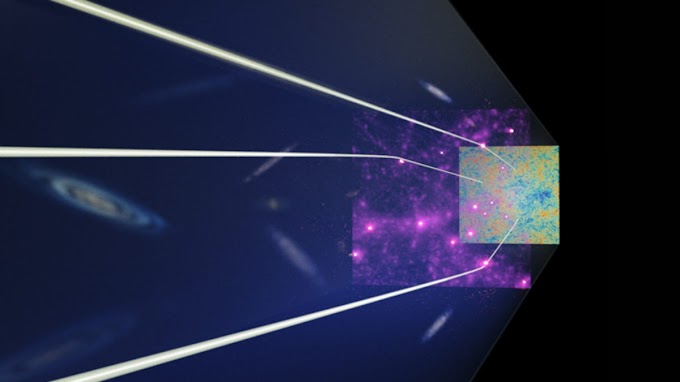India's AstroSat Telescope was used by a team of astronomers that detected emissions of Far UltraViolet (FUV) light 1.3-2.8 billion Light-Year away.
 |
| Image : IUCAA |
What is the Mystery
Astronomers of IUCAA have given a critical link in establishing the wider context of galaxy growth and evolution . So, scientists can now better understand cosmic activity .
Dwarf Galaxies are likewise expanding throughout time . Till today, scientists are puzzled by thinking – how planets recive the substances they require to develop . A team of Indian Scientists has recently lifted the curtain from this mystery .
Also Read :: Just Only Two Weeks in The Space : Hubble Space Telescope is Reshaping Astrophysics
Who Are Trying to Solve This
The scientist of Inter University Centr for Astronomy and Astrophysics in Pune have found the solution to this problem using AstroSat, India's first space observatory .
By the help of 17 hours observational data collected by Astrosats Ultraviolet Imaging Telescope , scientist of IUCAA Mr. Kanak Saha , his PhD student Mr. Anshuman Borgohain and they are collaborators at the Observatorie de Paris, IBM Watson Research Division, Tezpur University, along with a student and seasoned Indian astronomer, decided to investigate this issue .
 |
| The team looked at 11 Blue Dwarf Galaxies which are 1.3 - 2.8 Billion Light-Year away . Credit : NASA's Hubble Telescope |
What They Observed
The team of scientists noticed that if a star is created near a Dwarf Galaxy's edge , and from there it slowly begins to move toward the Galaxy's centre .
When the star expands within the Galaxy, its mass and brightness increases . Within this last two decades super telescopes have aided in the understanding of huge Galaxies such as Andromeda and the Milky-Way . These galaxies contains billions of stars . But, just a few stars are now forming in them .
Also Read :: Hubble Sees a Mirror Image of the same Galaxy by Gravitational Lensing
What They Said as Result
“We have proof that these galaxies are absorbing matter from the outside world . We saw the live creation of these Dwarf Galaxies ! ” Mr. Kanak Saha stated to a reputed News Site .
The scientist studied 11 Blue Dwarf Galaxies which are located 2.8 billion Light-Year away from us . There was a major difficulty to find out these tiny, incredibly Blue Star-Forming clusters which were too far away to notice . Even they contained a million Solar masses of Matter .
The mathematical calculation of the amount of time needed for the Star-Forming clumps to travel within the Galaxy, makes up a significant portion of this Research Work . According to Mr. Saha — the period could last up to a billion years, or a tenth of the life of a Galaxy .










